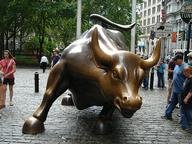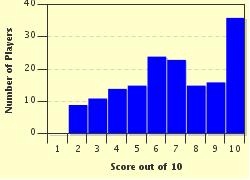Quiz Answer Key and Fun Facts
1. The Thirty Years' War (1618-1648) provoked heavy expenses for the belligerent states and cities. So some city leaders decided to issue foreign coins, but using less of the precious metal these usually contained. For instance the Berlin mint would issue Hanoverian coins (with only a fraction of the silver the Hanoverian mint would use) and spend these on paying Polish mercenaries. What is the name for this scheme?
2. Most historians agree that the first stock market bubble involved bulbs. What kind of bulbs bubbled in 1637 in the Netherlands?
3. In 1716, a Scottish gambler established the first central bank in France. A year later he also acquired the majority in what would become the Compagnie des Indes, which controlled French trade with the French colonies. To sell the shares of his firms, the Scottish majority shareholder started a marketing campaign which exaggerated future profits. Stock prices went up from 500 livres to 18,000 livres within a year. Of course this could not continue, and a major crash occurred in 1720 - the Mississippi Bubble. Who was the Scotsman banished from France after this crash?
4. Assignats were originally bonds representing confiscated church property. However, as the government issued more and more assignats without any proportion to the assets they should represent, inflation started galloping. Which country begun the assignat market in 1789 and abolished it in 1796?
5. The best known stock market crash of all times happened in New York at the end of October of a certain year. Black Thursday (October 24) knew a loss of 11%, and the Dow Jones index suffered two more significant losses within the week: minus 13% on Monday (October 28) and minus 12% on Black Tuesday (October 29). I won't ask you the year - but who was the US President at that moment?
6. In 1980, there was a brief incident on a commodities market. What was the commodity the brothers Hunt tried to monopolize?
7. October 19th, 1987 was the date of an unprecedented crash on the New York Stock Exchange. Comparisons with the stock market crash in 1929 were all over the place, already from the start of the year (and they could have served as a hazard warning). However, the Chairman of the Federal Reserve Board responded swiftly and did avoid a great depression as in 1929. Who presided the Federal Reserve Board in 1987?
8. It is safer to buy shares on Wednesday.
9. "This time it will be different". If you hear that sentence, take it as one of the gravest hazard warnings and sell off all your shares immediately, for it is merely some gobbledygook to seduce ignorant investors into dubious transactions.
Many internet companies sold their shares with the famous quote "This time it will be different", only to go bankrupt in 2000-2003. Which of the following was a famous bankruptcy *NOT* related to the Dot-Com Bubble (1995-2000)?
10. After the Dot-Com Bubble exploded in 2001-2003, stock markets started to rise again. But the NINJA mortgage loans provoked a serious crash in 2007-2008. If you know what a NINJA loan is, you would consider the existence of this product and its abundance a serious hazard warning. So what is a NINJA mortgage loan?
Source: Author
JanIQ
This quiz was reviewed by FunTrivia editor
trident before going online.
Any errors found in FunTrivia content are routinely corrected through our feedback system.

